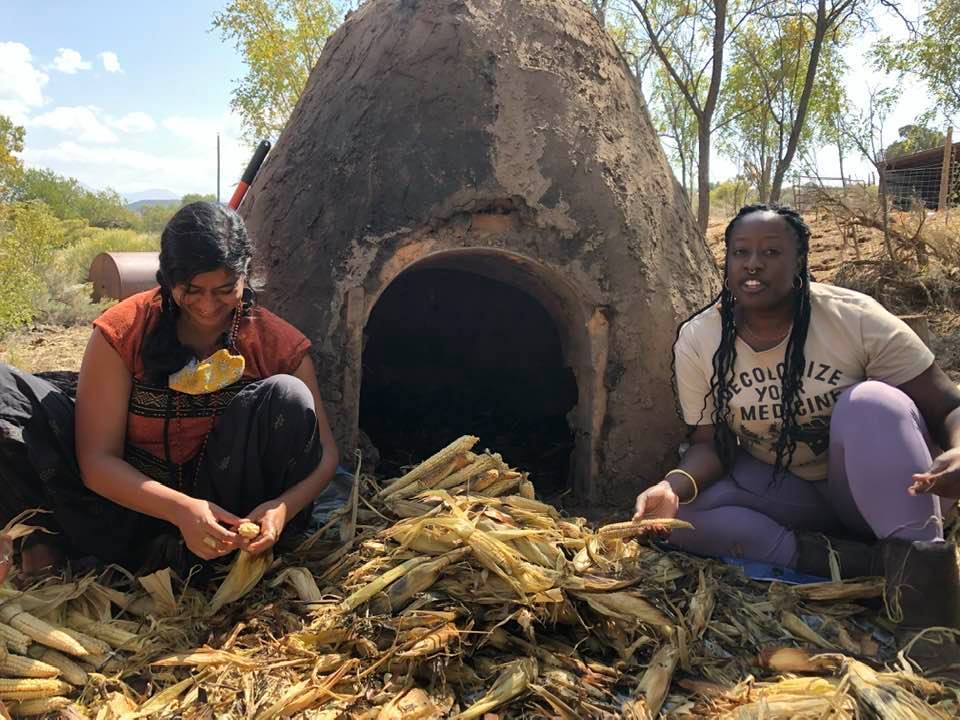First Foods
In the high desert of the San Luis Valley, anthropology professor and farmer Devon Peña, PhD, holds a cob of pearly white flint corn with so much admiration and tenderness you might think it was alive. Which it is. As Peña relays its story, it’s clear that this corn is not only a staple food crop, but also a sentient being with its own wishes, character, and life force—a sacred plant holding the history and culture of his ancestors within each kernel.
Corn in Colorado shares its history with the foodways of several Mesoamerican civilizations and indigenous nations. Peña suggests that most original indigenous nations in Colorado at some point grew corn. “Everyone has the stereotype that [they] were solely nomadic buffalo hunters and yes, that was an important part of their lifeways, but they were also horticulturalists.”
The prevalence of heirloom corn varieties in Colorado, along with indigenous peoples and their foodways (their culinary culture, knowledge, and economies), had been almost erased by forces of colonization. The Acequia Institute, of which Peña is the co-founder and president, is committed to revitalizing them.
The variety he’s holding is particularly special. It’s a local heirloom called maíz de concho, and is as close to a Colorado native corn as you can get.
“The beauty of corn is it’s a migrant,” Peña says. Likely concho is the result of a cross between Anasazi ancestral maize populations and northern Mexico populations transported by Sonoran farmers, meaning it’s been co-evolving in relationship to Colorado’s high desert climate, soil, and people for hundreds of years. This long process of selection gives it rare traits for corn: It can be grown at high elevation, in drought and frost conditions, and within an incredibly short growing season—profound qualities for food security in Colorado. It can thrive in harsh mountain environments, adapting each year to changes in the area’s climate.
Peña has even identified seedlings in the Acequia Institute’s concho fields that are genetically reverting back to relatives of corn’s wild ancestor, teocintle. This suggests that these local varieties are uncontaminated descendants from maize’s center of origin. And this genetic purity—meaning they’ve never crossed with any hybrid or GMO varieties—makes the San Luis Valley region arguably a national agrobiodiversity conservation priority. Fortunately, the Acequia Institute is stewarding important varieties like concho through its Almunyah, a 181-acre agroecological research farm and seed library.
Peña is adamant that foodways and farming practices are inextricable with the people who have been doing the work to select for traits that make food crops both climate resilient and culturally significant in their food culture over time. So his work goes well beyond producing and protecting seeds. The Acequia Institute recently purchased the R&R, Colorado’s longest continuously operated business, and renamed it the San Luis People’s Market. To help revitalize the culinary culture and knowledge that go along with seeds, a commercial kitchen and café for local foods will open within the market, which will also serve as a business incubator for BIPOC women who want to do value-added production. Concho is particularly suited to make chicos del horno, corn kernels steam-roasted in a traditional adobe oven, from which “you can make pozole, tortillas, chalupas, tamales, and that’s just the short list,” says Peña—“a great range of possibilities with respect to Mexican-Indigenous cuisine.”
For our food system to be truly resilient, it must be grounded in this type of food sovereignty. The Acequia Institute’s Almunyah team does more than bank seeds—they grow them agroecologically each season so that the plants can adapt with the climate and their human stewards alike. Peña smiles recalling his grandmother’s saying: “The seed is the plant’s memories of how to live well in this place.”
Take a Taste of History
To sample this special corn, you’ll have to travel to the San Luis People’s Market. The Acequia Institute is very protective of its concho maize seeds due to rampant biopiracy—Peña is currently the primary seed producer for the co-op members, and no one in the region currently sells it on a menu. However, the market plans to serve it to the public as part of its Decolonial Diet menu, along with many other traditional, tasty dishes.
The deli will also be centering traditional culinary preparations of all the organization’s heirloom maize by using nixtamalization, a process developed a millennia ago likely by Mayans and Aztecs that is still used today. The process involves soaking and cooking dry corn kernels in alkali such as lime or wood ash, then washing them several times. This treatment not only makes maize more flavorful and digestible, but also unlocks all sorts of vital nutrients—minerals like calcium, iron, copper, and zinc become bioavailable to humans through the process. This innovative ancient technique makes corn change from just a combination of sugar and carbs to a substantially nutritious staple.
Here’s a recipe for preparing chicos that Peña was given by the late Corpus Gallegos, a San Luis native who ran Colorado’s oldest continuously operated family farm, founded by his great-great-grandfather in 1851:
Rinse and clean the chicos, getting rid of the floaters.
Caramelize a diced sweet yellow onion. Add the chicos (and later, Bolita beans, if desired). Add broth and bring to a simmer for four to six hours.
Optional at a later stage: add meat—pork is Peña’s favorite but he has also used elk and lamb. Season with salt, pepper, and chile caribe.
Photos courtesy of Devon G. Peña, Acequia Institute






